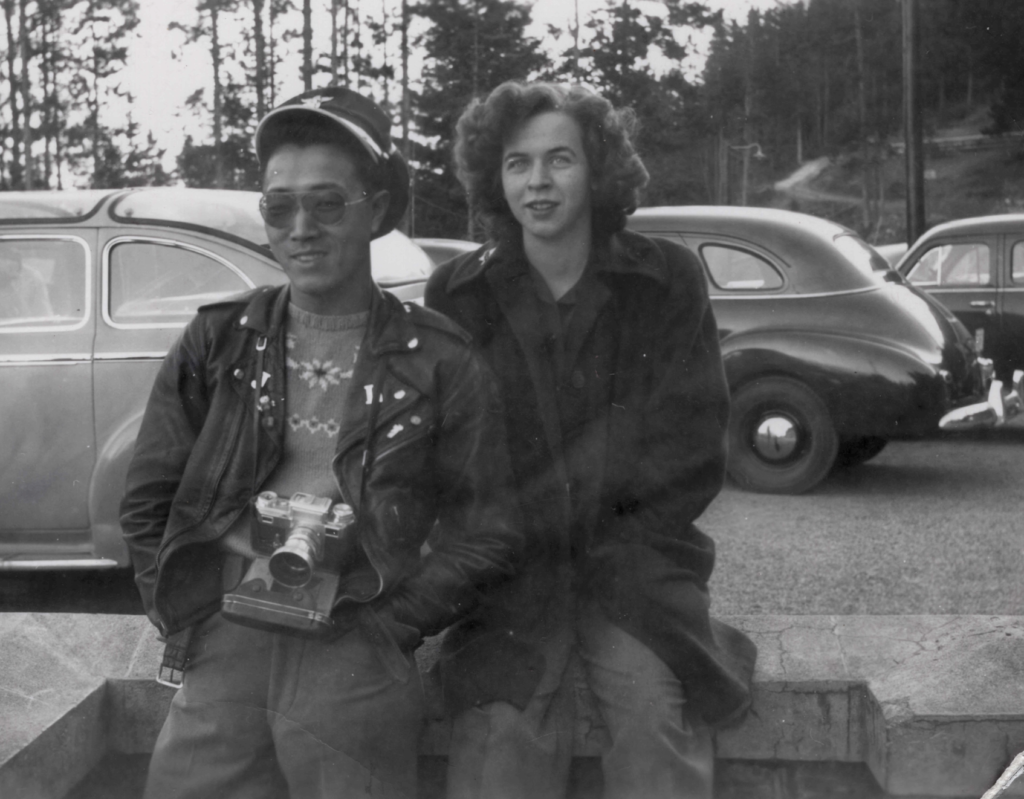
Walt Healy
None of this story would likely have happened without Walt Healy, an integral figure in Calgary’s motorcycle history. Walt was born in 1913 and lived his entire life in Calgary. As a youngster walking to school, he was curious about an Indian Power Plus that leaned against a fence at a local greenhouse. At 13 years old he was working as a bicycle courier for the Diamond Motor Company Limited – a Graham-Paige garage in downtown Calgary – and had earned enough money to buy a 350cc Douglas twin. Replacing his bicycle with the Douglas allowed Walt to deliver farther and faster, and it was the machine he owned as a founding member of the Calgary Motorcycle Club in 1926. After the Douglas, Walt ran a 1918 Harley-Davidson attached to a National sidecar, and opened shop as Walt’s Service, delivering everything from groceries to paint for 10- to 25-cents per load.


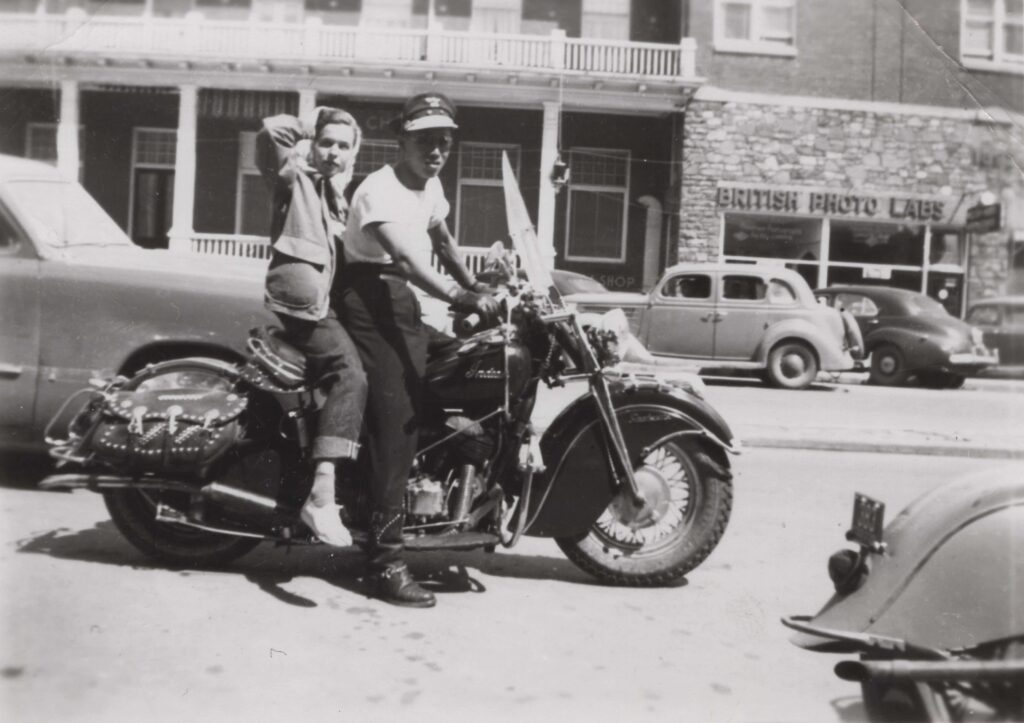
John ‘Jack’ Leong
Circling back to John ‘Jack’ Leong; he was born in 1923 in Vancouver, B.C. His parents moved to Calgary when he was a child, where his father prospered in business and later opened a gambling club. Leong Sr. was generous, often helping new Chinese immigrants gain their footing in the community. “I’m not even sure my dad could speak English until he started school here,” his daughter Denise Eckert says. Jack was mechanically minded and worked hard at whatever job he was doing. During World War II, he flew with the Royal Canadian Air Force.




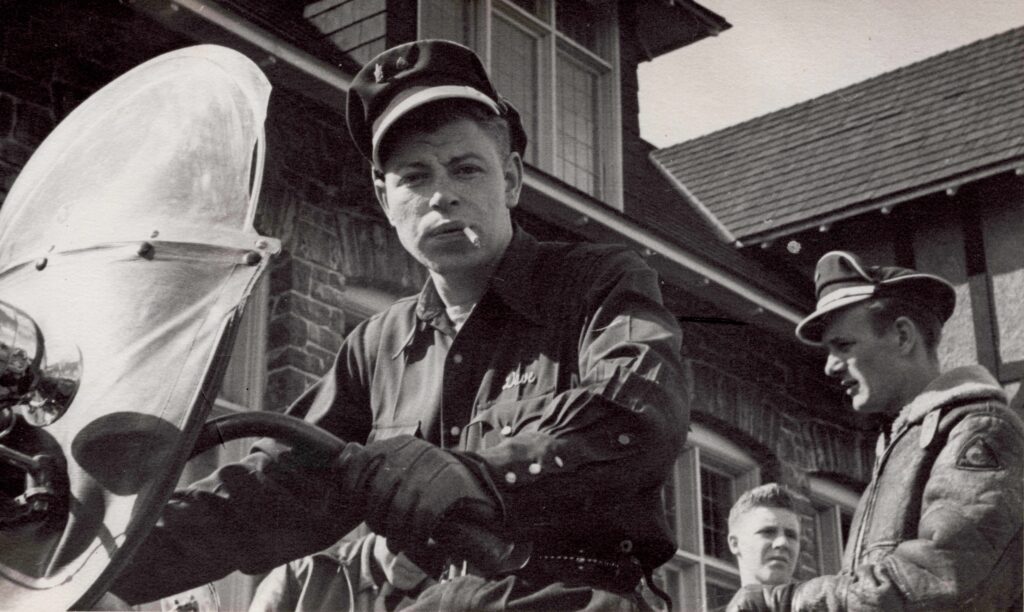
Art Gavel
But some remember the Ace-Hy Club, including Art Gavel. I interviewed Art four years ago and learned he was a talented motorcycle mechanic from Nova Scotia who arrived in Calgary in 1957. The day after he got to the city, Art was knocking on doors. The first place he stopped was Walt Healy’s motorcycle shop, then on 10th Street in Kensington. After a quick word with Walt, Art found himself employed and began turning wrenches the next day. “I never regretted working with Walt,” Art recalls. “He was a wonderful man to work for, but you didn’t want to get him mad. Of course, Indian – the brand Walt had started with – was done by ’53 so by that time we were selling Triumphs, and then Jawa and CZs. In the shop, I could service anything, and what Walt and I didn’t have in the way of tools to fix something we’d make.” He says Walt’s shop was roughly the size of three double-car garages. There was a showroom, and a large service shop. One of the most common chores in those days, according to Art, was bottom end servicing, including grinding crank journals not only for motorcycle engines but also automobiles and tractors.



Kaetyn St. Hilaire
When Jack died early in 2015 at the age of 92, Denise began the task of sifting through decades of her dad’s photographs, including the Ace-Hy archive. His work might not have come to light, however, if the Ace-Hy name hadn’t been resurrected in 2018 and used to identify the Alberta chapter of the Antique Motorcycle Club of America. Now, the revived Ace-Hy, as an AMCA chapter, holds regular meetings, road runs and swap meets and is fortunate to have young Kaetyn St. Hilaire as an enthusiastic member. Kaetyn works the club’s social media and updates the @acehymotorcycleclub feed on Instagram.









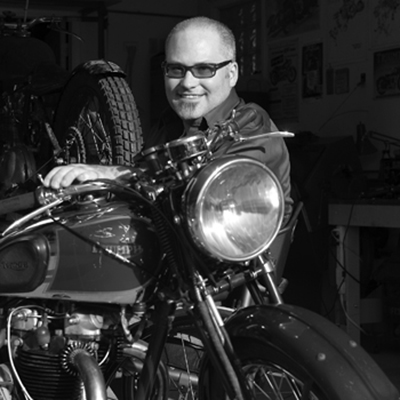



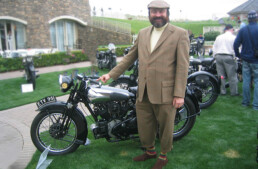
Greg is one of the best motorcycle writers of our generation.
Congratulations on having him as a contributor, Mark Appleton, British Cycle Supply Co, Nova Scotia
Hmmm … well ….
1) Greg’s been ’round these here parts for quite awhile
2) And err .. as reluctant as I am to say this cause I like Greg’s contributions … re; your comment ..
” …..one of the best motorcycle writers of our generation.”
Hate to say this … but the standards of ‘ your ‘ generation are pretty damn low .. proving the now age ole axiom I came up with from back in my days days as a professor / instructor / teacher ;
” The more one panders to the lowest common denominator … the lower the common denominator becomes ”
.. the point proven daily as the plethora of vapid , inane ephemeral garbage pours our from your generation ( with few exceptions ) on all fronts like bad water from a contaminated spring
I mean seriously son . Read any of your generations pathetic examples of say … M/C magazines ? Hell there’s ads with more content than 90% of the articles being ‘written ‘ ( using that word loosely ) in those over priced excuses for M/C magazines
” In the days before the ubiquitous smart phone placed a camera in the hands of everyone, photography was an expensive and time consuming hobby. ”
I’d subtract the hobby comment ( sure some was but a helluva lot more back then was ‘ professional ) … and add ..
….. expensive , time consuming and required genuine skill .. in the process producing photographs worthy of the word .. art … rather than the inane , vapid , ephemeral digital artifice that try’s to pass itself off as meaningful ‘ art ‘ these days .
Suffice it to say … when any damn fool can do it … it AIN’T worth doing
Analogue Rules ! … 😎
As for the article and the photos Mr Williams .. two thumbs up ! And FYI … moi ? Leica M6 analogue all the way and B&W to boot .
I hope that you create a coffee table book – I have tried to find as many Canadian – specifically Alberta images from this golden era of motocycling …. great story thank you!
Agreed on the photos, they range from fun club pix to sublime artistry.